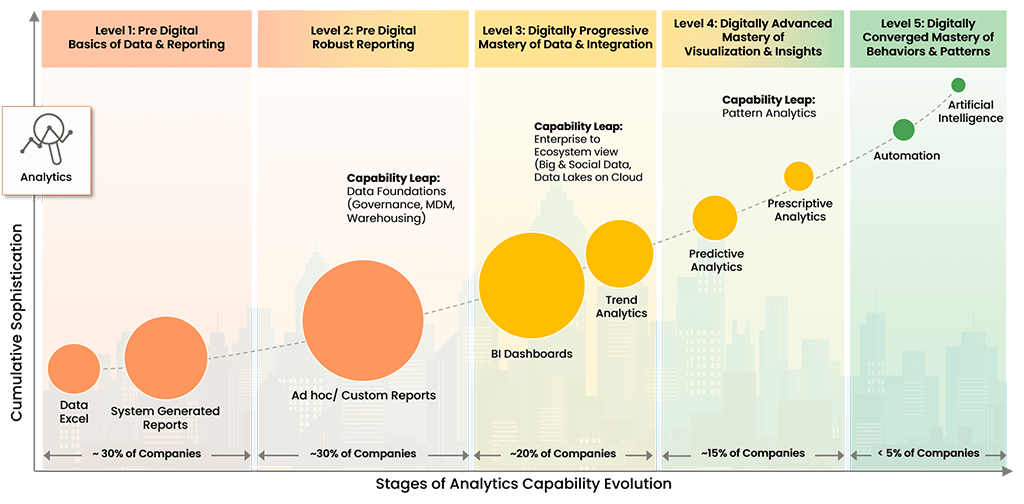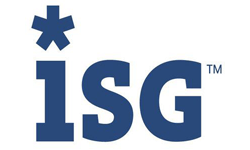How the Automotive Industry is Evolving
The automotive industry is gradually progressing towards
enterprise-wide digital transformation, with established OEMs driving
evolution across their existing product and service stacks to deliver
new innovations. New players experience less friction to innovation
thanks to minimal operational bloat, whereas existing players must
deflate their operations to compete. This results in the revival of
old ideas, leading to continuous innovation in products and business
models that force a Darwinian environment of “adapt or die.”
For new and existing players, this environment is creating a hotbed
for innovation through digital transformation. Rapid change is a
requirement, and falling behind digitally is becoming synonymous with
failure via loss of momentum. Automotive vehicles and technology are
converging to introduce new paradigms like electrification, vehicular
autonomy, diverse mobility models, and integrated connectivity.
This presents an avenue for the High Tech and Aviation industries to
cut across the automotive realm, namely due to their superior
technological prowess. The automotive industry must insulate itself
with increased awareness and sensitivity to the competition and,
through the adoption of technology and data-driven business models, to
do so at a pace that meets or exceeds that of competitors.
Only 7% of Companies Are Delivering on Their Transformational
Initiatives
Our research has shown that 30% of companies will fail to survive this
decade due to an inability to evolve digitally. To address this negative
trend, we have developed the
Digital Enterprise Evolution Model™

Copyright © 2022 Trianz
DEEM allows our clients to recognize digital evolution patterns,
implement benchmarking and prioritization strategies, and initiate
application management protocols to satisfy stakeholder and market
requirements.
Reinventing the Automotive Value Chain
To reinvent the value chain in the automotive industry, manufacturers
must reimagine the customer value proposition and respond by integrating
new digital capabilities. Competitors in the industry have already begun
to realize the importance and urgency of “digital first,” a
steppingstone towards digitally enhanced customer experiences (CX).
To lead in this space, keeping pace with industry averages is not an
option. Instead, companies need to use digitalization to deliver
connected and personalized experiences throughout the value chain, and
to all stakeholders.
Digital disruptors like Uber and Lyft are facing increased competition
following a “goldilocks” period where existing competitors lagged
behind. Previously, automotive organizations worked with these companies
to get a foot into the industry.
Now, automotive organizations are taking this experience and adding fuel
to the “mobility-as-a-service” fire by creating their own ride-sharing
and self-driving service platforms that directly compete with these
digital disruptors. With this in mind, it is no surprise that over
two-thirds of large enterprises plan to become fully digital, and focus
on reinventing existing experiences to
survive in an increasingly
competitive business environment.
No Room for Error
There is no room for error in how automotive companies develop and
implement strategies for the
digital era. A majority of companies are still outside the vision-driven quadrant
with digital transformation. This indicates that perceived urgency for
digitalization in the automotive industry is leading to continuous
action with the goal of transformation — however, the action itself is
sub-optimal.
New and emerging competitors in the automotive market are pushing
established players to transform their existing products and services.
This is leading to a significant proportion of automotive companies
reporting investments in analytics and process digitalization.
Additionally, these companies are introducing electrification and
Internet-of-Things (IoT) capabilities to drive connected and autonomous
vehicular experiences. The goal being to regain market share and
reposition themselves for the digital era.
Investing in Human Capital
The automotive industry sets a new standard when it comes to human
capital practices in the digital era. First, planned investment in human
capital digitalization is among the highest of all industries, driven by
changes to processes and the adoption of analytics. Talent acquisition
is another key area for human capital management, with advanced
analytics and AI-automation introducing new skill requirements. This
highlights the need for vision-driven digitalization among automotive
companies, while also exposing vulnerabilities for companies that fall
outside of the vision-driven quadrant.
Experience the Trianz Difference
Trianz enables digital transformations through effective
strategies and excellence in execution. Collaborating with
business and technology leaders, we help formulate and execute
operational strategies to achieve intended business outcomes by
bringing the best of consulting, technology experiences and
execution models.
Powered by knowledge, research, and perspectives, we enable
clients to transform their business ecosystems and achieve
superior performance by leveraging infrastructure, cloud,
analytics, digital and security paradigms.
Reach out to
get in touch or learn more.


















